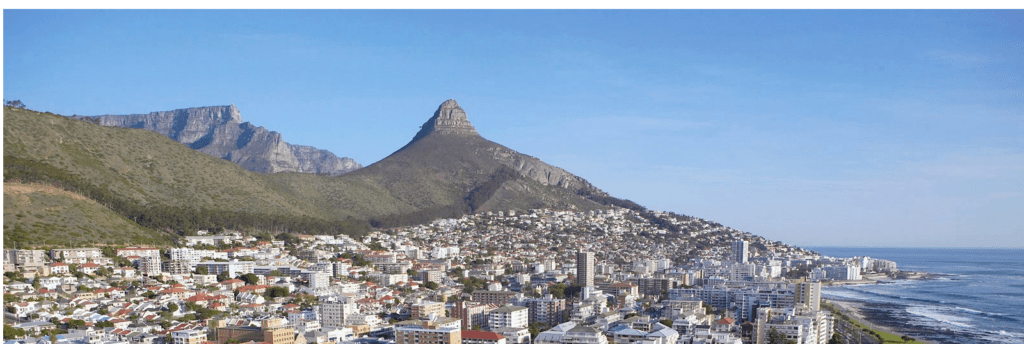History of Sea Point
- Province; Western Cape
- Coordinates; 33°54′55″S “18°23′33″E
- Area; 1.58 km2
- Municipality; City of Cape Town
Captain Cook’s men named Sea Point
Sea Point was where Sam Wallis, one of the commanders serving under Captain Cook encamped with his men in 1767. They stayed there to avoid an epidemic of smallpox in Cape Town at the time.
Around that time also, on the slopes of Signal Hill, there was a men’s club which was a place of entertainment for the Free Burgers, VOC officials and visiting Europeans. A residential suburb grew in the area in the early 1800s and was inhabited mostly by European settlers.
Tramway to Sea Point
A tramline linked to Camps Bay was opened in 1862 and the railway line reached Sea Point in 1905. In 1877 the Cape Town and Green Point Tramway company built houses for their employees who were of diverse colours and cultures, when the company folded in 1895 other people moved into the area. While there was always some segregation. The suburb has always been home to both “coloured” and white people.
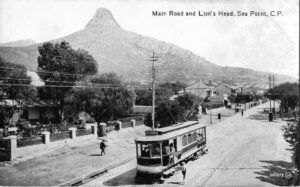
More forced removals
In 1902, the Native Reserve Locations Act was passed and all black men living in council accommodation in Sea Point were forcibly removed to the Docks Location and the order to remove all other people of colour was made in 1957.
Sea Point Baths
The baths were opened in 1895, these were for white people only and had separate bathing times for men and women. They were filled at low tide with the use of a centrifugal gas-powered pump The baths were sadly destroyed by a storm in 1911 and were never rebuilt, however, construction started on the Sea Point pavilion in 1913. Entertainment offered included a tea room and an outdoor cinema. The pavilion was renovated to accommodate more people.
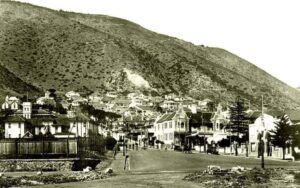
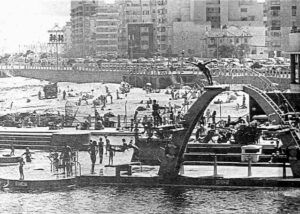
The promenade
Today the promenade is a venue for local artists to exhibit and it is frequented by locals and visitors soaking the sun and enjoying the outdoors.
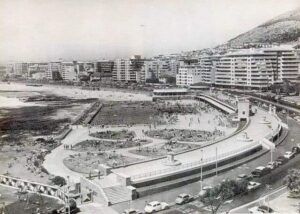
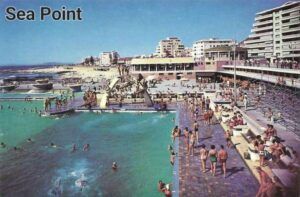
Charles Darwin’s Rocks
Next to the parking lot at the south end of Queens Beach, near the intersection of Beach and Alexander Roads, are some striking rocks that are considered a ‘geological wonder.’ They represent an impressive ‘contact’ from about 540 million years ago between granite and the sedimentary rock that forms Signal Hill. They were discovered by Clark Abel in 1818, and are named after Charles Darwin who visited them on his worldwide journey in 1836. He was intrigued by what he saw and decided to stay at the Cape of Good Hope, the second-longest of all his stops during his five-year voyage
The five white horses on the grass of Sea Point’s promenade are a permanent art sculpture commissioned by the City of Cape Town.
The postcodes for Sea Point are 8005 (streets) and 8060 (boxes)
Things to see and do in Sea Point
- Pavilion Park is a tidy fenced-off play park for children right next to the Pavilion
- Sea Point promenade
- Sea Point Promenade outdoor gym.
- Festival of chariots
WEATHER IN SEAPOINT TODAY
all listings in Sea Point
Useful Numbers
- Police: 021 430 3700
- Traffic department: Gallows Hill Traffic Department-0860 103 089
- Fire: 021 434 2020
- Water: 0860 103 089
- Electricity: 0860 103 089
- Ambulance: 10177
- Post office;021 434 2315
- Library:021 400 4184
- Closest hospital; Sea Point Medical Centre- 021 439 4497
- Sea Point Civic Centre: 021 400 3647
- Pharmacy; Sunset Pharmacy-021 434 3333
- SPCA: 021 700 4140
- Schools
Sea Point High School-021 434 9141
Sea Point Montessori Pre-primary School-083 944 9772
Herzlia Weizmann Primary School-021 286 3901
French School Cape Town-021 434 1278 - Ratepayers Association: 083 3888 226
- The City of Cape Town Public Emergency Communication Centre is available 24/7 For all life or property-threatening emergencies, call 021 480 7700 from any phone or 107 from a landline or report online at https://bit.ly/3o4Ji3K
Other suburbs along the Atlantic seaboard include: Bantry Bay; Bakoven; Camps Bay; Clifton; Fresnaye; Greenpoint; Hout Bay; Llandudno; Mouille Point; and Three Anchor Bay

